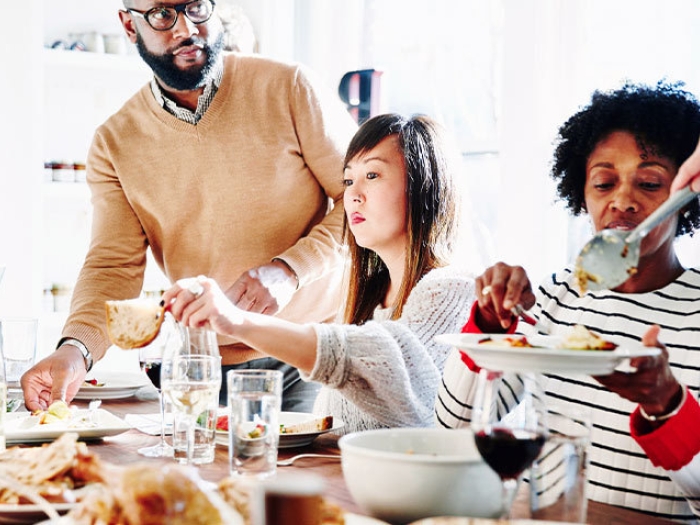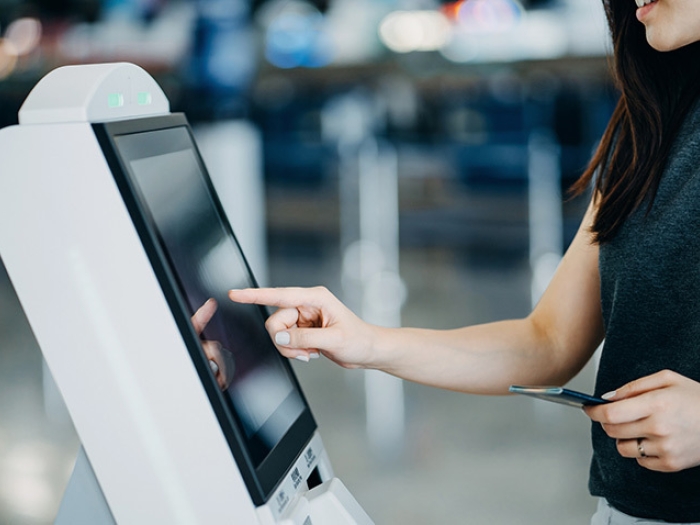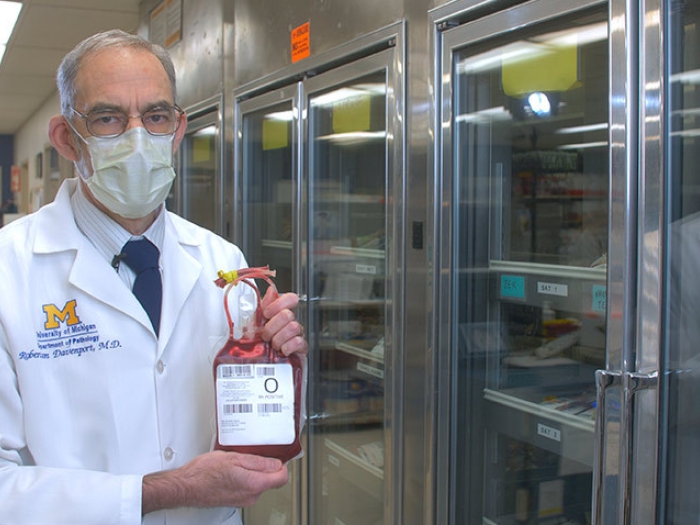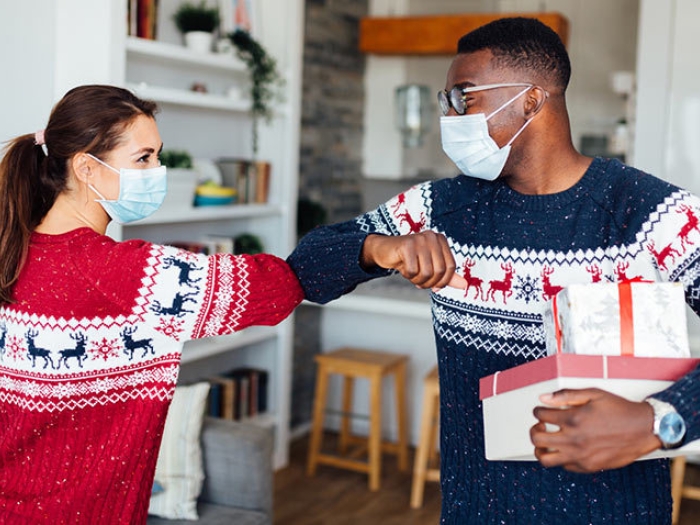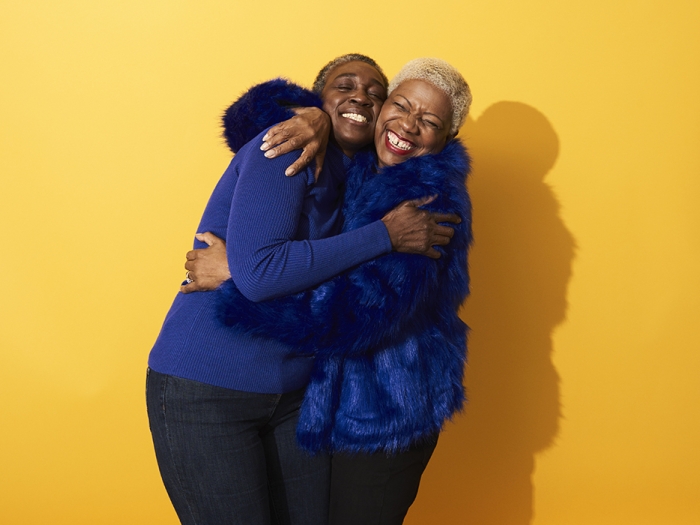Tips for what to do if someone in your learning group, friend group or social circle gets exposed or sick.
8:37 AM
Author |
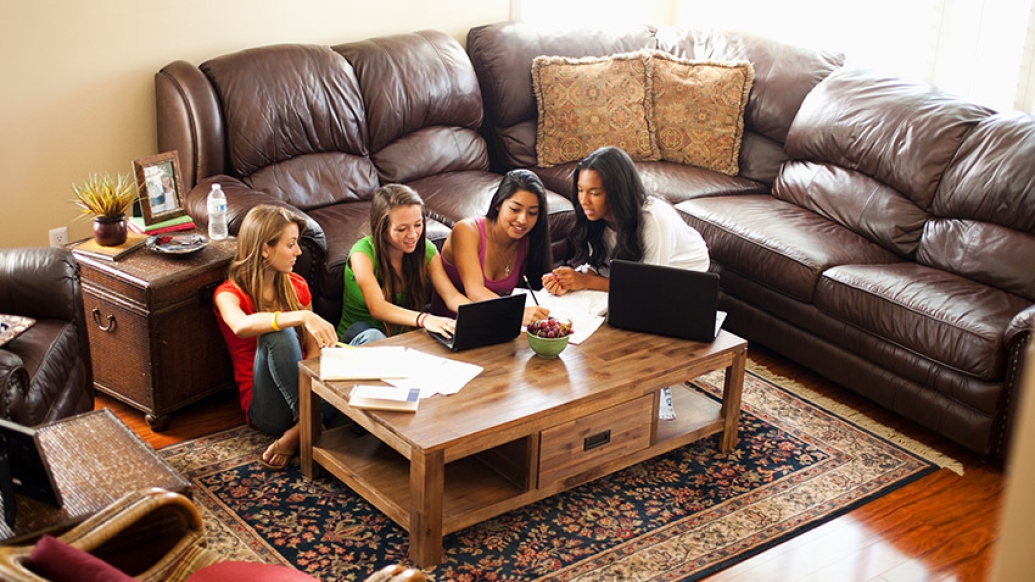
For many Americans, life in the time of COVID-19 means forming "pods" – small groups of people who agree to share child care and education responsibilities, or to study or socialize together.
Whether it's a preschool playgroup, a few elementary school children doing online learning, a small bunch of teens allowed to hang out together, a college dorm crew or a team of adults who gather occasionally, many people have joined pods.
Pods – sometimes called "bubbles" or "quaranteams" – aren't officially recommended by public health officials. And people who have a high risk of getting seriously ill or dying from COVID-19 because of their age or health should avoid pods.
But many see it as a "middle way" to stay safe, healthy, socially supported and sane amid a raging pandemic.
"Being in a pod is like being in a little rowboat together and trying to stay dry," says Preeti Malani, M.D., an infectious disease physician at Michigan Medicine, the University of Michigan's academic medical center, and chief health officer for the U-M community. "If someone from the boat jumps into the water and then tries to climb back on board, the boat could tip – or they could get their fellow passengers wet. Taking on too many passengers could make the boat sink."
SEE ALSO: 14 Things to Do If Someone You Live with Has COVID-19
So how can 'pod people' keep their risk low, with the coronavirus cases rising rapidly throughout the United States, and the weather forcing many people indoors where the virus can spread easily?
First, make sure all pod members agree on the basic scientific facts about coronavirus:
-
Coronavirus is more dangerous than the flu or many other viruses. It has killed hundreds of thousands of Americans and made millions more sick, including long-term symptoms.
-
It spreads mainly through the air, especially indoors, but can also linger on surfaces.
-
Wearing a mask over the mouth and nose can reduce the chance of catching or transmitting it. Protecting your eyes can reduce the chance even more.
-
People who catch the coronavirus can go for days without knowing they have it – even while they're spreading it to others.
-
The most contagious days are two to three days before symptoms start, and three to five days after – but can last up to 10 days after the first symptoms appear.
-
The highest risk of catching it comes from being within 6 feet of a contagious person for 15 minutes or more, especially indoors without masks.
-
Symptoms can develop up to two weeks after being exposed to a contagious person. They include fever, fatigue, dry cough, shortness of breath, diarrhea, loss of sense of smell or taste, headache, other aches and sore throat.
-
Children and teens can catch and spread it, not just adults.
-
Most young people have a lower risk of getting seriously ill or dying from it, but they can spread the virus to people whose age or health issues make them much more likely to end up in the hospital or dead.
-
No one wants your pod to lead to a serious illness or death.
Follow these pod COVID-19 safety tips:
1. Keep your pod small, and agree up front exactly who is in the pod. Pledge to be truthful with one another, and swear to follow public health guidance.
Even if you think of the pod as being the children, teens or adults who want to be together for learning or socializing, it actually includes everyone who lives with a pod member, too. That's because the virus can spread easily in households or group living quarters.
Agreeing to be in a pod, and to let your children or yourself enter other "pod homes" without masks, means you're taking on the COVID risk of everyone in the pod.
So, you should all agree that you'll tell everyone in the pod if you or someone you live with feels sick. You should all be ready to admit to everyone that you slipped and went to a non-pod party where people weren't wearing masks. And people who aren't working from home should commit to notifying the pod if they find out that someone at work has the virus or might have it.
Any brush with the virus means you should uphold the trust that your pod-mates place in you, and stay away from them for the time periods outlined below. Your pod is only as good as its weakest link.
Don't be the weakest link.
2. Get a flu shot.
The last thing you need this fall and winter is a false alarm in your pod when someone comes down with a fever, aches, cough or a general "bleh" feeling, and you don't know if it's flu or COVID-19. Though the flu shot doesn't prevent all cases of the flu, it can keep you from getting as sick as you would have otherwise.
3. Find ways to be together outside, or to reduce indoor risk.
Even if everyone in the pod is working hard to stay safe, the virus can find its way in. And if you're indoors in a small stuffy space, close to someone in your pod who has it but doesn't know it yet, you're at high risk of catching it.
If the weather allows, spend as little "pod time" indoors as possible. When you have to be indoors, keep the ventilation system running and don't get too close together.
4. When you venture out of your pod, play it safe.
Every time you go into the "non-pod world", you and your fellow pod members increase the risk that you could bring the virus back to your pod-mates. So focus on minimizing trips to indoor locations and prioritizing the ones you need to make most.
Even if your state, county, city or town doesn't have a mask requirement, everyone in the pod should agree they will always wear a mask over their mouth and nose when they're in public and near other people who aren't in the pod.
SEE ALSO: Making Back-to-School Decisions for Families with Underlying Health Conditions
This is especially true for indoor spaces like offices, stores, churches and temples, schools, salons and theaters, or when doing something that makes people breathe harder like playing sports, singing or working out at a gym. If someone asks you why you have a mask on, tell them it's to protect others, keep calm and walk away.
Being in a pod is like being in a little rowboat together and trying to stay dry. If someone from the boat jumps into the water and then tries to climb back on board, the boat could tip – or they could get their fellow passengers wet.Preeti Malani, M.D.
Avoid large gatherings and events even if you wear a mask. When you want to see non-pod people that you know, stay outdoors at a distance, alone or in small groups.
Your pod may want to decide in advance if you are comfortable with pod members doing indoor activities that require mask removal, such as dining inside a restaurant. Of course, seeking necessary medical or dental care where masks may have to come off is acceptable because medical and dental professionals take extra steps to protect patients.
What to do if your pod has a brush with coronavirus:
If a pod member has symptoms of COVID-19, the entire pod needs to stop getting together immediately.
The person with COVID-19 symptoms should get tested immediately, preferably with a nasal swab virus DNA test, and should share their test results with the rest of the pod as soon as they find out. They should consult with their health care provider about how to monitor and treat their symptoms, and whether they should seek a quick test that might be less reliable. They and the people they live with should understand what symptoms require medical care.
MORE FROM MICHIGAN: Sign up for our weekly newsletter
While they wait for their viral DNA test results for COVID-19, which can take several days, the person with symptoms should isolate, meaning they stay alone in a closed room in their home, have food delivered to their closed door, and not share a bathroom with others in their home if at all possible. If they live alone, they should keep in touch with other pod members for emergency help.
The rest of the people they live with should quarantine, which means staying home except for going to medical appointments, or into their yard, patio or balcony for fresh air. Even if the person who has the symptoms hasn't interacted with the other pod participants in person, the people they live with have. So the rest of the pod is at risk, and everyone in the pod should stay apart until the test results are known.
If their test comes back negative, the person with COVID-like symptoms should still stay home until they feel well – they might have another contagious disease such as flu. The other people in their household may also want to wait a few days to see if they caught this illness before gathering with other pod members again. The rest of the pod can decide if they want to gather again or wait a few more days.
If the symptomatic person's test comes back positive for COVID-19, they should stay isolated for at least 10 days, or longer if they still have a fever or other symptoms.
-
Everyone they live with should get tested, and should stay home in quarantine for 14 days. If they develop symptoms they should isolate for 10 days or longer after their own symptoms start.
-
The other households in the pod should stay apart from one another, and all pod members should stay home as much as possible.
-
People in these other households who had direct contact with the COVID-positive person anytime in their most-contagious period should also get tested.
If a pod member finds out they've been exposed to a person outside the pod who has COVID-19, or has symptoms and is waiting for test results:
-
The exposed pod member's risk of getting the virus and getting sick or passing it to others depends on a lot of factors (see above.)
-
Just to be safe, the pod member who had this potential exposure should stay home for 14 days, even if they don't get sick during that time. The people they live with should stay away from other pod members.
-
The exposed person should seek COVID-19 testing around 5 days after the last time they were with the non-pod person who has a known or suspected case of COVID-19. Even after they get their test results, they should continue to quarantine until the end of the 14 days after the last known exposure.
-
If a "contact tracer" from the local health department contacts the exposed person, it's important to answer their call or text, and follow their advice.
-
If the exposed pod member develops symptoms or tests positive, follow the guidance above.
-
If exposed pod member has a negative test and doesn't develop symptoms within 14 days, they can rejoin the pod in person, and so can the people they live with. The rest of the pod could decide to start gathering sooner than this.
SEE ALSO: Keeping Our Patients Safe During COVID-19
If someone in the pod "slips" and goes somewhere where people aren't wearing masks, especially if they were close together and indoors:
-
Depending on how common COVID-19 cases are in your area, the risk of catching it will vary. But the risk is highest in crowded, unmasked, indoor gatherings. If the pod member went to one of these, they and the people they live with should stay away from the rest of the pod for 14 days.
-
With the holidays coming up, have a pod discussion about travel and large family gatherings that may include people who aren't taking the same precautions you are. If you decide to go to indoor celebrations without masks, or travel to an area with high COVID-19 activity, this means you will need to stay away from your pod-mates for 14 days afterward, to make sure you don't bring COVID-19 to them.
Help pod-mates who have to isolate or quarantine at home.
-
If you give a pod-mate a ride to get tested or get medical care, because they live alone, are a single parent or their partner needs to stay with the children, keep masks on and car windows open.
-
Offer to go grocery shopping for pod-mates and households that have people in isolation and/or quarantine. You can also offer to pick up items from the pharmacy or carry-out orders from restaurants.
-
If they live alone and they're in isolation because they have COVID-19 symptoms, a positive test or they're waiting for test results, they may need help with walking pets or handling yardwork or snow shoveling.
-
Even when pod members have to stay apart, keep up your pod's social support virtually. That can be by group texts, video chats, phone calls or simultaneous movie-watching.
-
Being stuck at home because you're sick, worried about getting sick, or living with someone who's sick is no fun. Help them make the best of it. Who knows, it may be their turn to support you next.
SEE ALSO: Seeking Medical Care During COVID-19
Be understanding and kind.
-
Choosing to be in a pod is not for everyone, so if you were approached about being in one you don't have to say yes. And if someone turns down your offer, don't press them.
-
It's all right to leave a pod if you find out that you don't agree with the risk-tolerance of your pod-mates. You can still be friends! Just make sure to connect virtually, or outdoors from a distance with masks on.
-
If someone decides to leave your pod, accept their decision without questioning it or trying to convince them to stay in. But before they go, you could ask whether there are specific steps that might make them decide to stay, so you can continue enjoying the socialization and support.

Explore a variety of health care news & stories by visiting the Health Lab home page for more articles.

Department of Communication at Michigan Medicine
Want top health & research news weekly? Sign up for Health Lab’s newsletters today!
